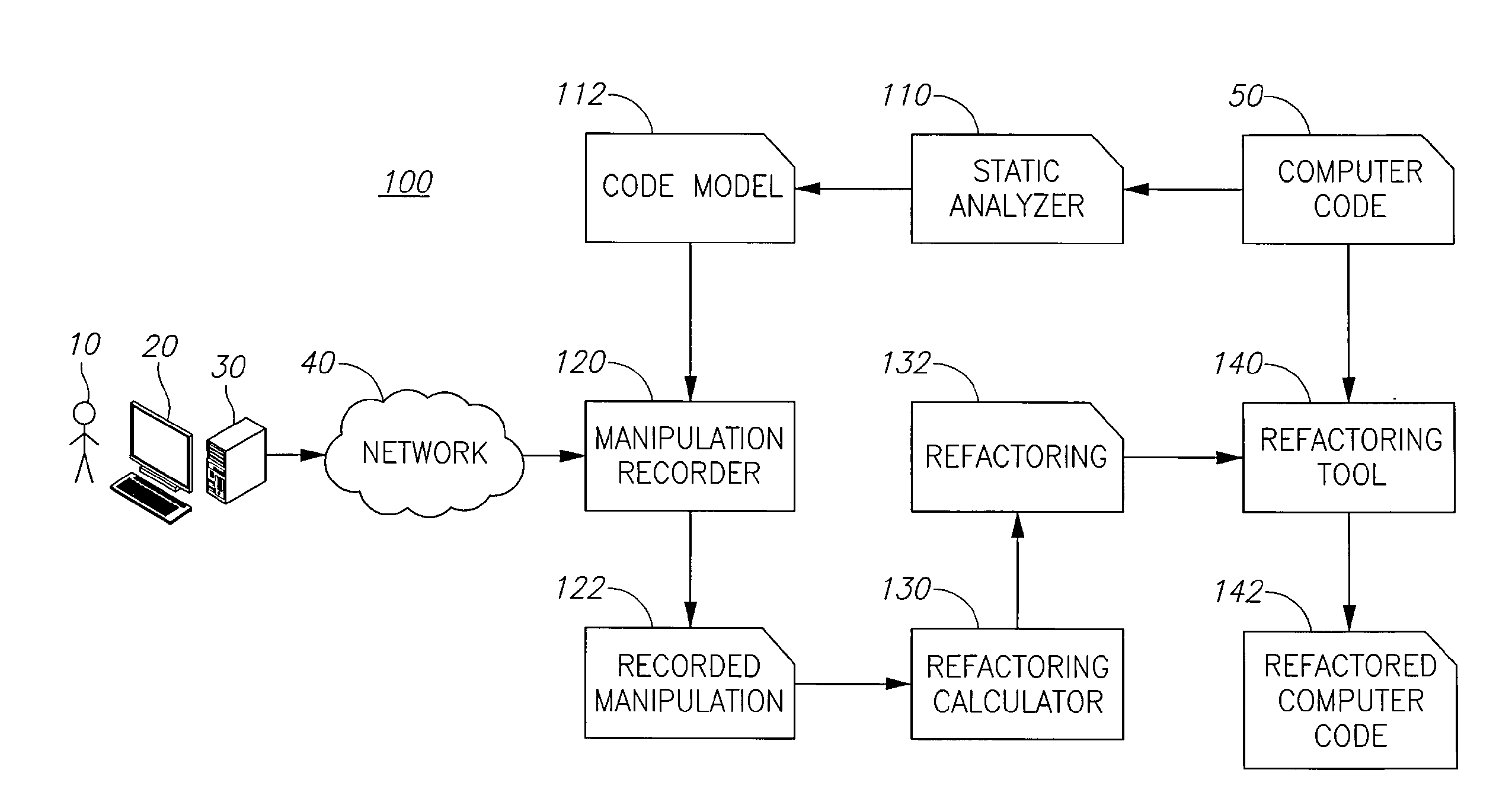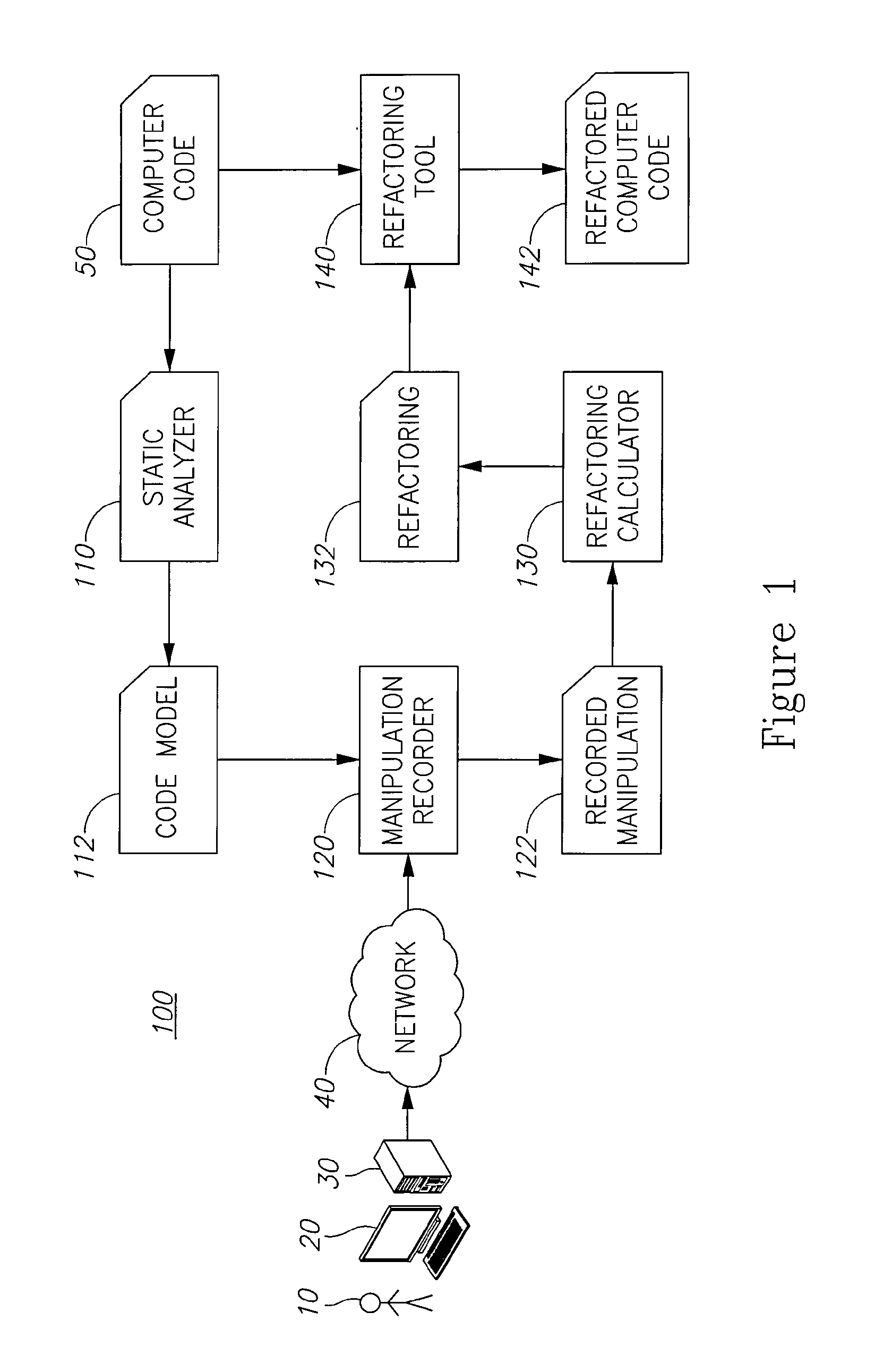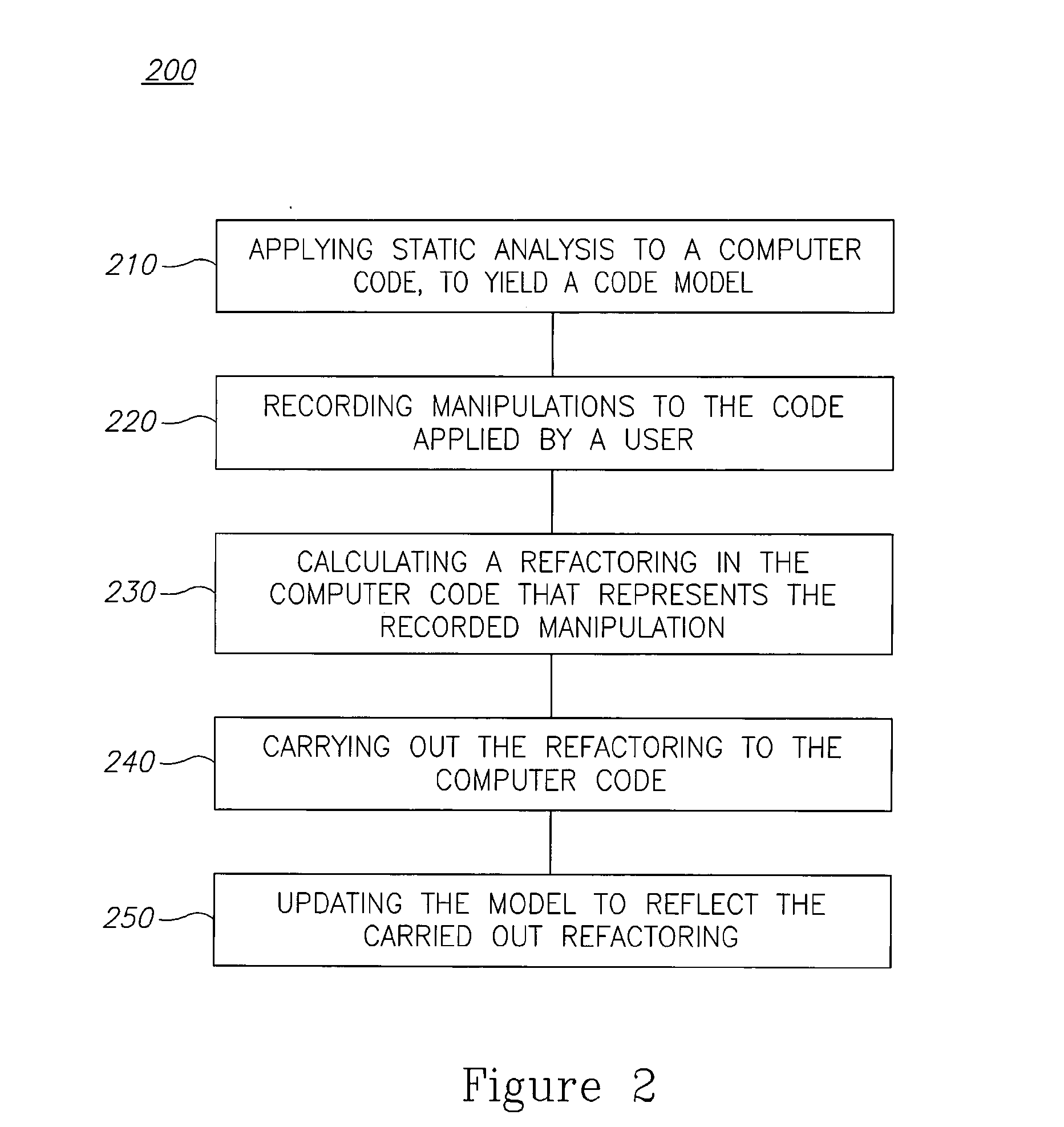Software architecture by untangling undesired code level dependencies using code refactoring
a technology of code refactoring and software architecture, applied in the field of software engineering, can solve the problems of user performing more complex refactorings (such as extracting computations) which are impossible to perform on models
- Summary
- Abstract
- Description
- Claims
- Application Information
AI Technical Summary
Benefits of technology
Problems solved by technology
Method used
Image
Examples
Embodiment Construction
[0018]Prior to setting forth the detailed description, it may be helpful to set forth definitions of certain terms that will be used hereinafter.
[0019]The term “code refactoring” or simply “refactoring” as used herein refers to a technique for restructuring an existing computer code, altering its internal structure without changing its external behavior undertaken in order to improve some of the nonfunctional attributes of the software. Typically, this is done by applying series of “refactorings”, each of which is basically a very small change in the source code that does not modify its functional requirements. Advantageously, refactoring results in a more readable code that has reduced complexity which leads to an improved maintainability of the source code, as well as a more expressive internal architecture or object model to improve extensibility.
[0020]The term “extract computation” as used herein refers to a specific technique of refactoring in which a part of a code that needs ...
PUM
 Login to View More
Login to View More Abstract
Description
Claims
Application Information
 Login to View More
Login to View More - R&D
- Intellectual Property
- Life Sciences
- Materials
- Tech Scout
- Unparalleled Data Quality
- Higher Quality Content
- 60% Fewer Hallucinations
Browse by: Latest US Patents, China's latest patents, Technical Efficacy Thesaurus, Application Domain, Technology Topic, Popular Technical Reports.
© 2025 PatSnap. All rights reserved.Legal|Privacy policy|Modern Slavery Act Transparency Statement|Sitemap|About US| Contact US: help@patsnap.com



